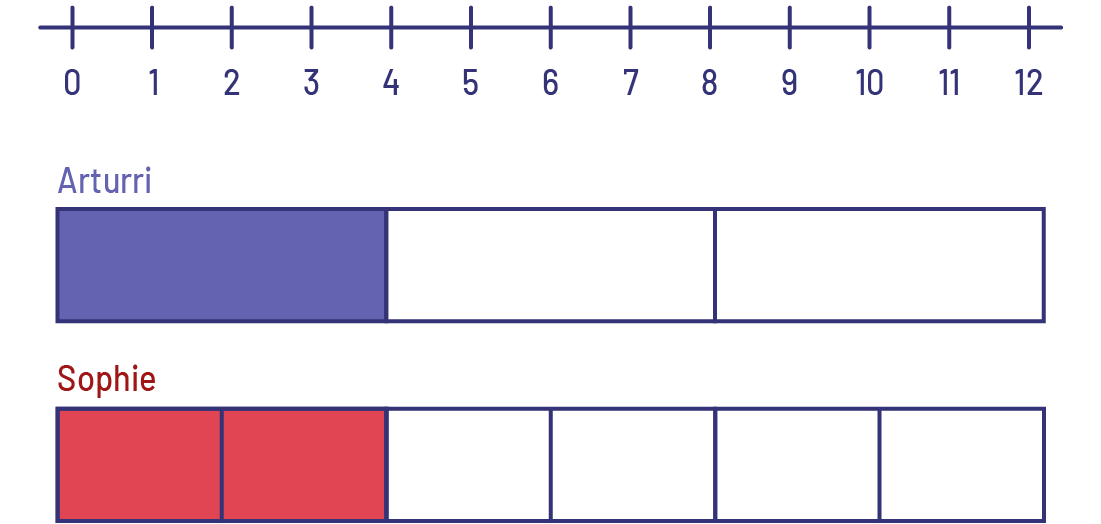B1.7 Recognize that one third and two sixths of the same whole are equal, in fair-sharing contexts.
Activity 1: Which Part? (Represent Equivalent Fractions)
Directions
Give 12 counters to each student or team of two.
Ask students to divide the counters into four equal groups of the same colour.
Ask students the following questions:
- If I divide the tokens into four equal groups, what do I call these groups?
- What does each of these equal groups represent?
- How would you write the fraction to represent each of these groups?
Have students divide the tokens into four equal groups: two groups of one colour and two groups of another colour.
Ask students the following questions and record their response:
- If I divide the tokens into four equal groups, what does each group represent?
- What fraction of the set represents a group of three tokens?
- How would you write the fraction to represent this group?
- What fraction of the whole does each red group represent?
- What fraction of the whole do the two red groups represent?
- How would you write the fraction to represent these two groups?
Note: To identify the different groups, write the name of the fraction in words (for example, a fourth). It is important for students to associate the name of the fraction (for example, one-fourth) with the number of groups or parts before exposing them to its symbolic form (for example, \(\frac{1}{4}\)).
Resume the activity, this time with thirds and sixths.
Intervention
When objectifying, ask students questions such as:
- What does the number above the fraction bar represent?
- What does the number under the fraction bar represent?
- In how many equal parts is the whole divided, if a part is called a third? a fourth? a sixth?
Adapted from Marilyn Burns, "Fractions with Two Color Counters," About Teaching Mathematics, pp. 225-226.
Source: translated from Guide d’enseignement efficace des mathématiques de la 1re à la 3e année, Numération et sens du nombre, p. 54.
Activity 2: Comparing Fractions
Present the following situation to the students.
Arturri and Sophie are playing a video game. To win, they must complete 12 levels. The 12 levels represent the whole. Arturri has completed one third of the levels. Sophie has completed two sixths of the levels. Now, who has completed the most levels?
Representation of equivalent fractions using a linear model

I know Arturri has completed one third of the whole, so I split the whole into three equal parts and coloured one to show what Arturri has completed.
I know that Sophie has completed two sixths of the whole, so I split the whole into six equal parts and coloured two to show what Sophie has completed.
Looking at the two fraction strips, I can see that Arturri and Sophie have achieved the same number of levels. So, one third and 2 one-sixths (two sixths) are equivalent fractions.
Source: translated from En avant les maths! 2e, CM, Nombres, p. 3.
